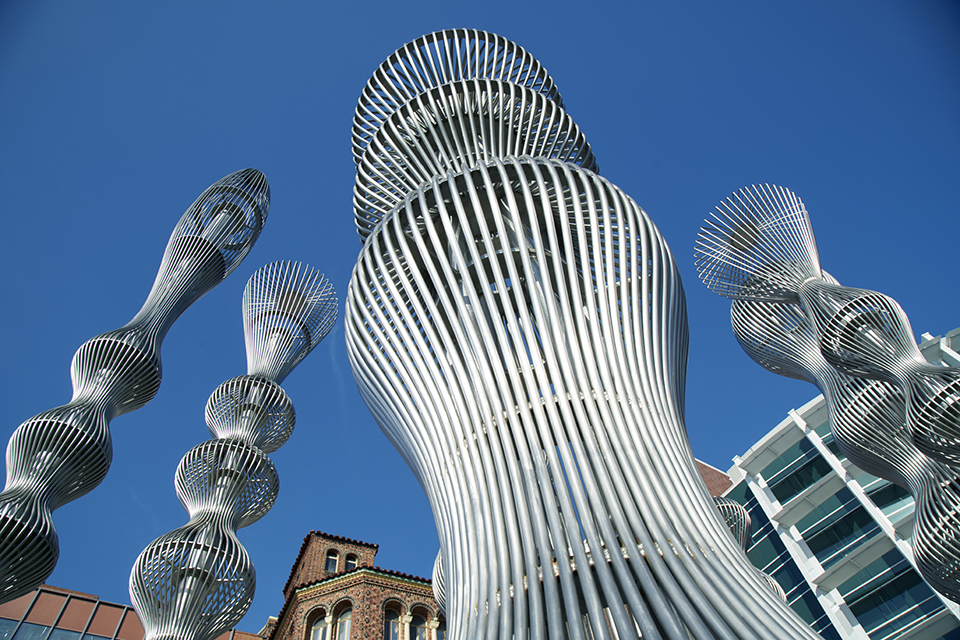The Making of Ethereal Bodies 8
Posted by Aug 15, 2017
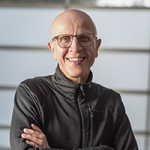
Mr. Cliff Garten
This post is part of our Public Art Network 2017 Year in Review blog salon.
Ethereal Bodies 8 is the most recent evolution in a series of sculptures I began in 2008 with Sentient Beings, a civic art installation located in North Hollywood, CA. I was most interested in expanding upon the anthropomorphic qualities of that work and enlarging the scale to be proportionate with the large entry round-about site at Zuckerberg General Hospital and Trauma Center in San Francisco, CA. The final work is a group of eight sculptures that together function as one group, smaller groups, and also as single parts. Through the design process, each individual sculpture really took on its own unique characteristics and quirkiness. The human form is something I explore more fluidly in my studio art practice and it was enjoyable to see how this interest unfolded in an abstract form at a larger than life scale.
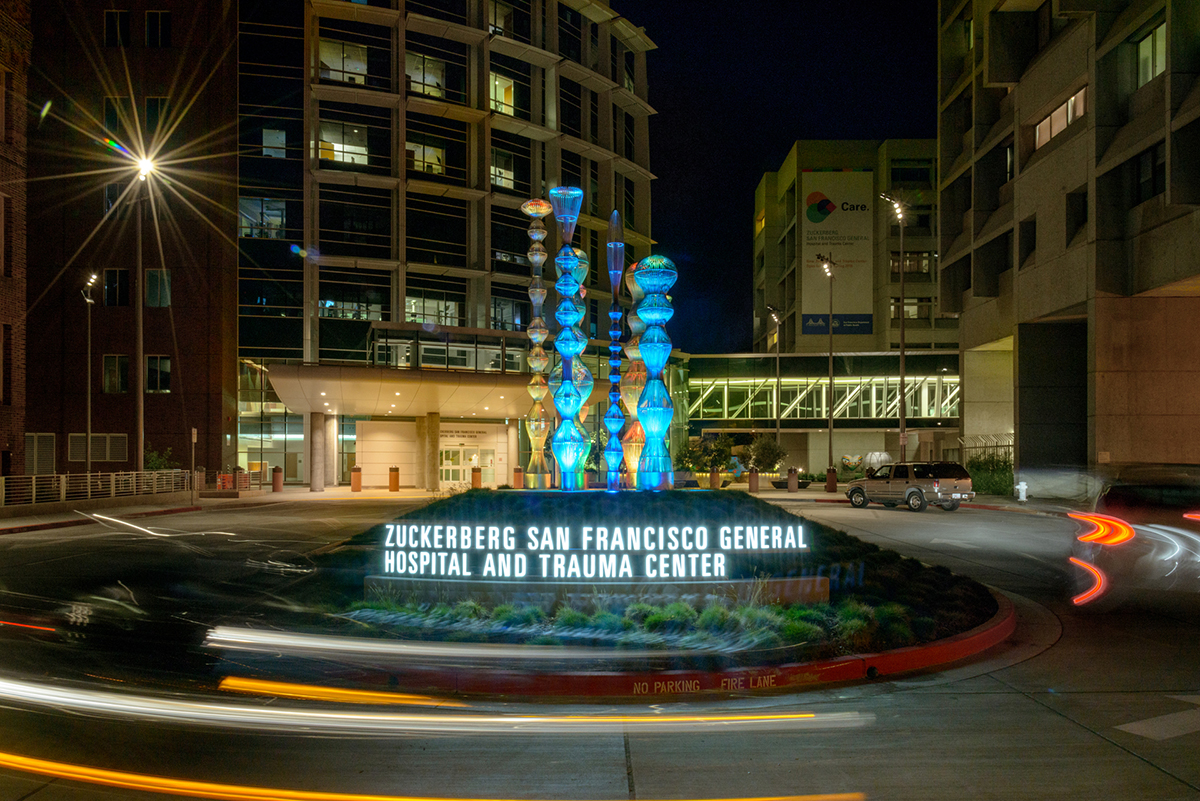
This concept of the individual positioned within a larger group is a theme that fit well within the sculpture’s context of a health care facility. It has been interesting to note the evolution of studies regarding health care and art especially because Ethereal Bodies 8, situated at the hospital entrance, is the first artwork that the visitor might encounter. Here, I’ve transformed the roundabout into a contoured earthwork planted with grasses that form wave-like berms that crescendo at the highest point of the pedestal or footing at grade. If viewed in a section, these berms form a shape similar to the profile of the sculpture, as if one was laid on its side exposing one half of its bilateral symmetry. This grass is called Festuca rubra and creates a texture and color that act as a counterpoint to the shimmering and diaphanous quality of the sculptures.
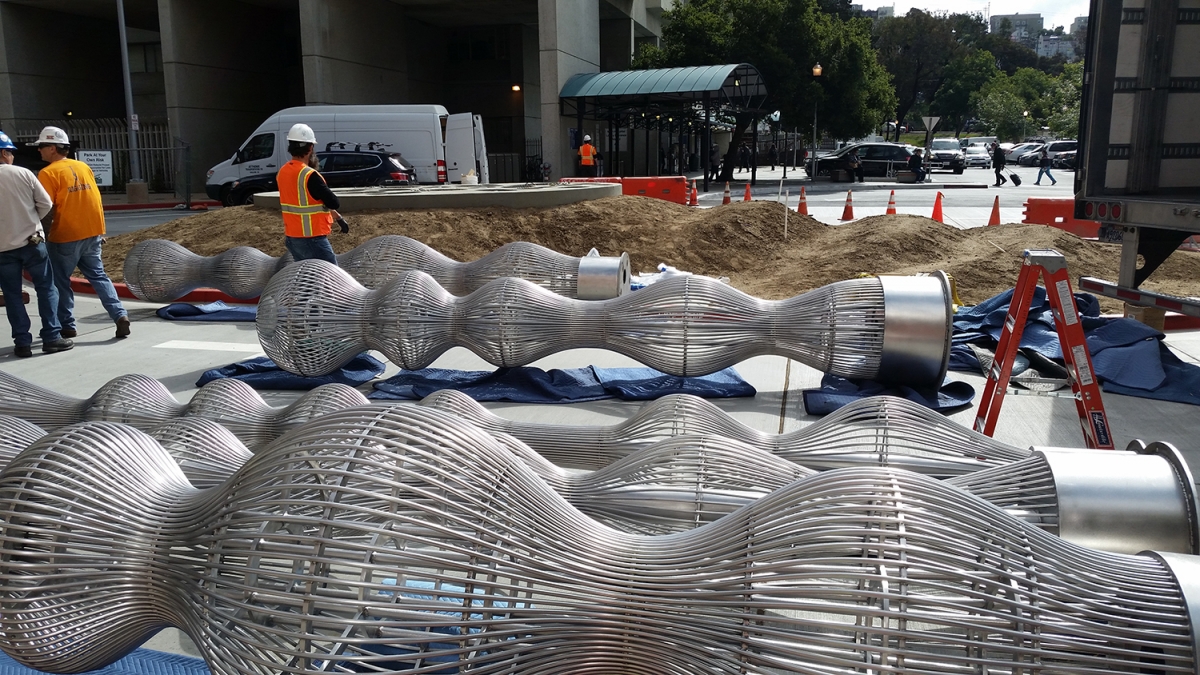
Within the group there are three large volumes with shapes that fit together when their positive and negative forms overlap at different viewing angles. Five more sculptures of varying heights from 14 to 21 feet offer several other layers that together form one body. Each individual form is comprised of 1/2”, 3/8”, and/or 1/4” diameter brushed stainless steel rods with a varying distance between each. This structure causes a lightness and transparency of the forms that allows them to separate and recombine as the visitor encircles the entry drive often creating moiré patterns in a cinematic effect.
Through the design process, each individual sculpture really took on its own unique characteristics and quirkiness. The human form is something I explore more fluidly in my studio art practice and it was enjoyable to see how this interest unfolded in an abstract form at a larger than life scale.

The sculptures take on a different form at night when they are illuminated by full color LED light. Because LED light is spectral, the edges of the brushed stainless steel act like little prisms and break any of the primary LED colors back into their spectral colors. This creates a riot of hues running through the primary color being projected to further engage the viewer’s perception. My unique lighting program designed specifically for this artwork creates transitions of colors to appear from 30 seconds to a minute or longer before they fade into another color. Different colors are used to illuminate different forms. The clustering of the transparent volumes provides spatial depth, recombining of forms, and the mixing of spectral colors.
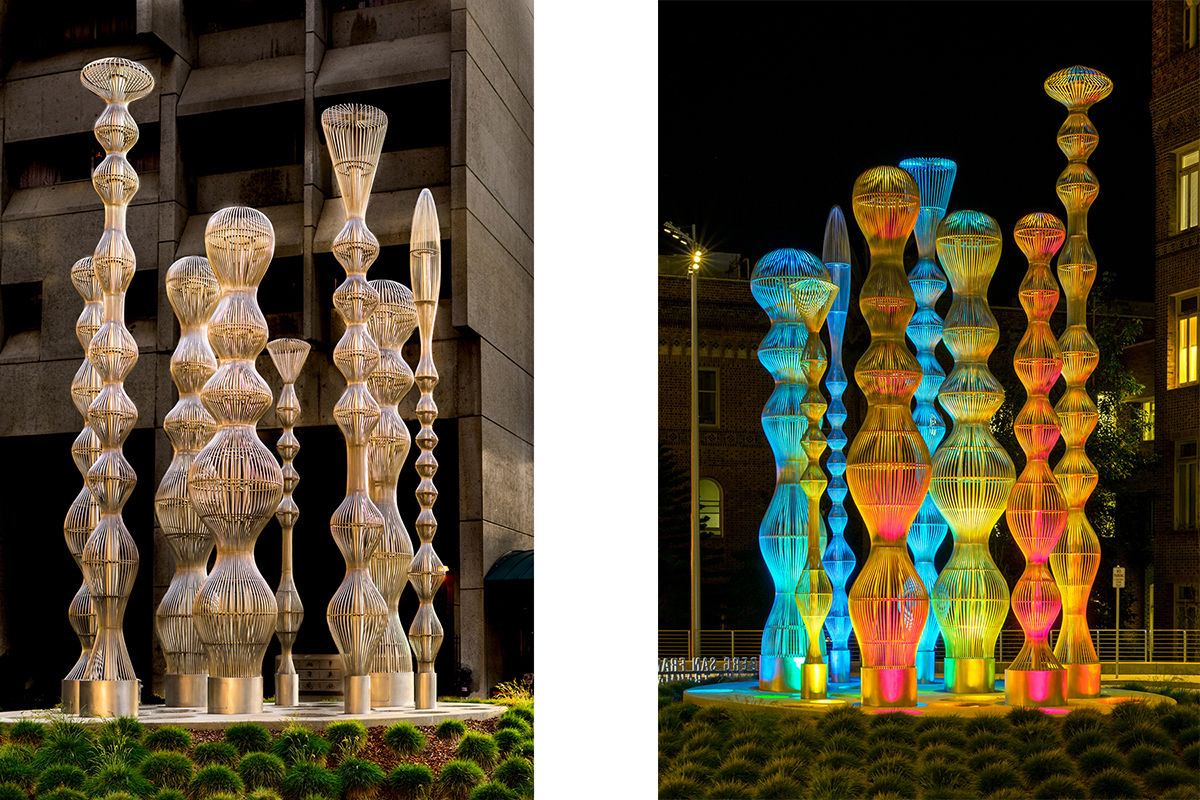
As with each sculpture I create, achieving a high performance in support of environmental sustainability and budget is crucial. This is most often possible by simply making smart choices about materials and fixtures. A primary example in this project is the LED lights that are rated for approximately 73,000+ hours of life. The energy saving over conventional lighting is tremendous. The sculpture is illuminated from 14 lights in pockets in the foundation of the footing. The lights are outdoor rated and waterproof. Each points up at the sculptures and most of this light is caught by the structure of the sculptures themselves, which complies with local dark sky ordinances. To achieve similar long term cost savings in landscaping, the Festuca rubra grass is a species that has a successful local growth rate that should only be cut back once a year if needed. Additionally, the median is irrigated with Netafim, a drip irrigation system that offers significant water savings.
